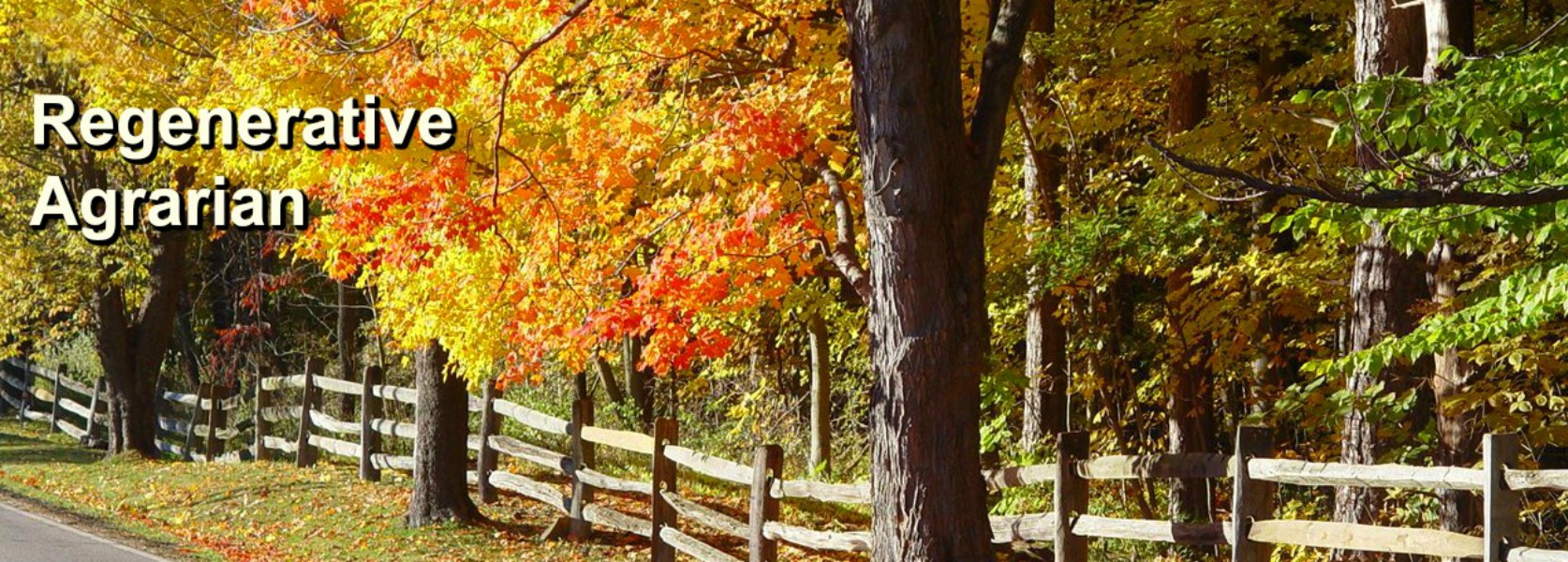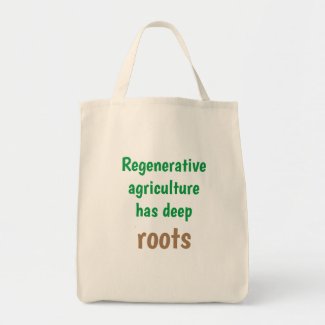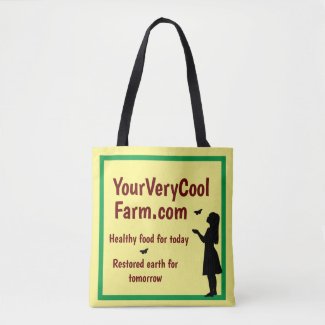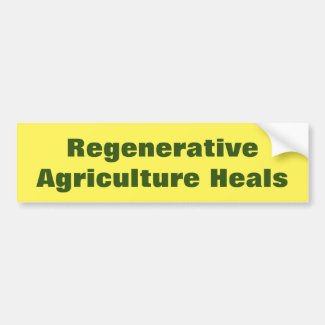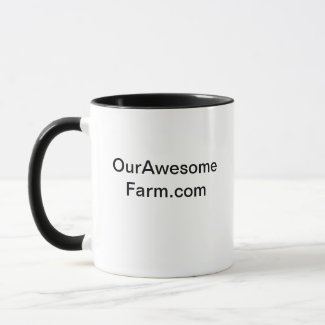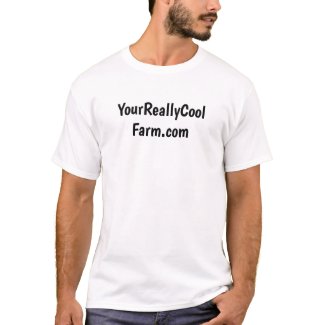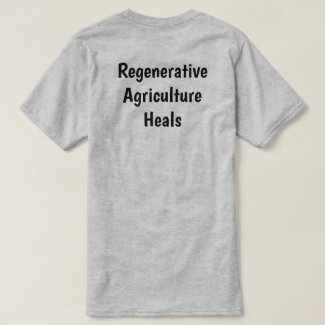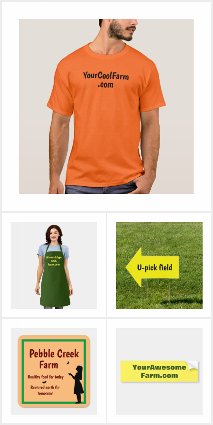Regenerative Agriculture Certification: An overview of three certifying programs, plus thoughts on remaining uncertified.
by Barbara Berst Adams -- Copyright National Lilac Publishing, LLC
A number of regenerative agriculture certifications have become available as we literally and figuratively gain ground in this important arena. At times, a third party certification can greatly benefit farmers and ranchers with their bottom line via market exposure, but also with assistance for their own regenerative farming goals. At the same time, there are situations where remaining uncertified also has advantages. This article discusses three regenerative certification programs, as well as the case for remaining uncertified. Let’s jump right in.
1. Certified Regenerative by AGW
A Greener World (AGW), a 501(c)3 nonprofit, offers various certifications including a well-respected Animal Welfare Approved certificate, and now has a pilot program for regenerative certification. They offer their Certified Regenerative by AGW status to farmers in the USA, UK, and South Africa, with an invitation for those in other regions to contact them to see if they can work together.
It
utilizes a Regenerative Plan unique to each farmer designed by
regenerative experts of whom can include the farmer. Their overall standards have been designed by
farmers, scientists, vets, and are re-evaluated annually to incorporate
knew knowledge and insights.
It’s a whole farm program, so all farmed products, whether plant or animal, can carry their certified label once properly approved. It works with farms from small to large, as well as qualifying farming entities such as farm co-ops.
This
label does not automatically also mean “organic” and a farmer can be
approved for this label without also having separate organic
certification. They can also, of course, become additionally approved
for organic under a different certifying entity of their choice, or AGW
does also offer organic certification. But some regenerative producers
have issues with certain organic requirements (see below) and a
regenerative certificate sans organic certification may be of benefit.
Unlike organic certification, there’s no three year transitional period.
A regenerative approved certification through AGW starts
immediately.
They state they offer below market rates for applications and auditing for their certifications, and because it’s a nonprofit, they can offer the additional certification free of charge with the help of donors (hey environmental and animal welfare philanthropists -- looking at you!). They also offer free technical and marketing support, and inclusion in their market lists. Since their Regenerative certification also automatically includes their Animal Welfare Approved label for producers with livestock, the latter label can be especially valued by certain restaurant and other market outlets.
A quick shout out for their included Animal Welfare Approved label. AGW emphasizes not only animal welfare while the animal is on the farm, but also during any transportation and slaughter. One of our favorite Washington State regenerative farmers states that animal welfare for farmed animals doesn’t have to mean “a great life with only one bad day.” He states no animal has to have even one bad moment. He harvests his animals with no fear or pain right on his own farm, surrounded by their herds or flocks. Another regenerative rancher who isn’t able to harvest on the farm goes to the slaughter house with her animals and stays with them to keep them stress free. Yet another regen bison ranch that’s restoring midwest wild prairieland not only harvests humanely in the field, but has checked for cortisol levels in the meat after harvest, and found zero. Making sure there wasn’t even a split second of fear or pain. (Not all of these example ranchers are AGW certified -- but they demonstrate great integrity in a manner that also allows them to prosper financially.) These types of authentic animal welfare practices are highly respected by us here at the Regenerative Agrarian. They benefit both the animal and the human who eventually consumes them. And they can draw valued customers to the farm’s brand.
2. Regenerative Organic Certified™ (ROC)
This regenerative certification program is through the nonprofit 501(c)3 Regenerative Organic Alliance (ROA). ROA is an alliance made up of various organizations and brands including the Rodale Institute, Patagonia, and others. As the name implies, this certification assures that the farm is both regenerative and organic at the same time. It’s for either or both plant crop and animal crop producers (ranchers, vineyards, integrated plant/animal farms, etc.)
Regenerative Organic Certified™ is set up to help fill the gaps left by the USDA Organic certification alone. It starts with USDA Organic as its baseline. Then adds three extra pillars beyond organic:
- Soil health: Insuring the growth of organic matter and biodiversity. No soilless growing methods are included in this certification.
- Animal welfare, which includes the “Five Freedoms,” grass-fed/pasture raised, no CAFOs or excessive transport, species appropriate shelter.
- Social fairness for farmers and farm workers
The Five Freedoms for animal welfare are:
- Freedom from discomfort
- Freedom from fear & distress
- Freedom from hunger
- Freedom from pain, injury or disease
- Freedom to express normal behavior
In an effort to make this certification affordable to all farmers, they have a farmer cost-share program that can be applied for. Funds are limited, though, so it’s on a first-come, first serve basis, with remaining applicants pushed forward for the next year. Applicants must have already paid the fees and been approved to apply for up to 75% reimbursement, and must gross less than $250,000 annually in regenerative crops
3. Ecological Outcome Verification™ (EOV)
This program from the Savory Institute is worded differently than the above two -- based on the Savory method of holistic planned grazing and using the term verification vs. certification, plus, not usng the term regenerative, Many who fully understand it, though, agree it certainly is regenerative when done properly and in the right locations. Currently only for livestock operations, they may add other services that can be certified, such as hospitality (which we think could possibly benefit agritourism businesses) in the future.
It’s described as being outcome based and that it measures the health of the land as a living system. Its three focuses are soil health, biodiversity, and ecosystem function. Approved participants can be on the supplier roster of Savory Institute’s Land to Market program.
After an initial visit to the farm (producer, rancher, supplier) for a baseline assessment, annual visits measure short term regenerative progress to see if the trend is going in the right direction at enough capacity. If so, certification is granted, and renewed each year thereafter as long as the trends continue in a positive direction according to their assessments. Every fifth year, though, long term measurements are taken to see if those trends are also moving in the right direction. If so, as with other years, in the fifth year, verification is renewed.
Obviously, it’s based on Savory’s Holistic Management methodologies, and aspiring regenerative ranchers would want to become familiar with those methods and jargon to fully understand the value and depth of this certification program.
It works with livestock producers near enough to one of its worldwide Savory Network Hubs (a list of them here: https://savory.global/contact/?sub=savory-global-network-hub-inquiries). If regenerative ranchers don’t see one near them, they can still contact the Savory Institute which may find a way to work with them. Fees are negotiated with and paid directly to whichever Hub the farmer is working with. It’s regional and eco-system specific. I contacted them once about how animal welfare fits in, and was led to one article on their website (which I’d already seen) about the value of welfare for animals. I didn’t see any specifics regarding slaughter, shelter, etc. But what I can say is that no animal product that’s regeneratively certified or verified is allowed to experience the horrors of CAFOs. And that the Savory Institute utilizes the animals’ natural instincts, such as remaining close to their herds and moving on to new ground relatively quickly, that, on a level almost higher than science, means an animal is happy and experiencing life according to its Nature given specific species’ needs.
Touching on that topic a bit more, long distance hauling to a strange blood-scented slaughterhouse, even if harvest is quicker than CAFOs, isn’t part of nature, yet many ranchers who otherwise provide ideal lives for their animals while they regenerate the planet have their hands tied with the current system of meat packing and other regulations for harvesting their livestock.
One rancher wanted more than anything to have the harvest done right on the ranch, but legal services for that weren’t available in his region. We encourage and support all efforts to remedy this situation, as it benefits not only the animals, but customers are becoming more sophisticated in what humane really means. For example, just because customers learn that all the cows on a dairy that claims to be humane have names and are treated kindly during their milking years, customers are starting to ask further. Are calves taken away from their mothers too soon and too abruptly? What happens to their yearly male offspring and their female offspring that won’t become dairy replacements? And when the kindly treated Bossy and Betsy et al are no longer producing, is their processing into burger, leather and bone meal a humane one?
Animal well-being concerns apply to non-conventional and ecologically grown plant crops grown directly for human food, as well. Wild birds and mammals such as blackbirds, ducks, raccoons, squirrels and voles are killed in tremendous numbers to protect plant food crops grown for direct human consumption, and killed -- along with amphibians, reptiles, and terrestrial mollusks -- inadvertently during no-till spring seed drilling, harvest even with the lighter machinery, and attempts at protecting crops with netting which ensnares and kills many birds and other animals per year.
One benefit of truly regenerative livestock agriculture is that no additional outside plant crops are grown just to feed livestock, unless it’s leftovers from crops first grown for people (such as letting cows graze over a field of polenta corn after it;s harvested for humans). Nor are monocrops of grain, starch and oil plants grown to make meat substitutes. Instead, the livestock share biodiverse pastures, meadows and prairies with an ecosystem of many intertwined species which regenerates to better and better conditions for the soil, water and wildlife each year. Progress is even moving towards not having to exclude the larger predators, such as bears and cougars. (For perspective, bears are not excluded only to protect livestock, they're also killed or excluded to protect vegetable, sweet corn, peanut, sunflower, orchard, berry and other fruit and honey crops.)
The case for not certifying, at least for now, or maybe forever
The financial cost to farmers (and yes, there’s a time cost, also) for certifying or verifying is currently a trade-off between exposure to higher paying markets and/or higher numbers of regenerative-savvy customers, and the fees and property amendments required for regenerative certification. Premium crop prices and an elite group of customers are great starting points.
But surely reaching daily mainstream markets with everyday prices is a goal for regenerative agriculture. Imagine a world where subsidies weren’t paid directly nor indirectly out to CAFOs but instead to offset costs of regenerative certification and to financially support the benefits regen ag provides to our planet and natural resources. As well, financial protection to regenerative farmers and ranchers feeding middle class and low-income communities on a daily basis.
Or perhaps in addition to or instead of, capitalism itself could become a partner in an authentic way (rather than in a greewashing way). Reports from Raising Regenerative describe numerous big businesses embracing regen ag, including Ardent Mills, the largest North American miller of wheat for flour. They state it aims to have wheat growers adopt regenerative agriculture practices for 250,000 acres by late 2022. Their partner in the effort, Nutrien Ag Solutions, is pushing to help food producers reap carbon credits along with the food they grow.
For now, it’s also viable for some to bypass the financial and time costs and restrictions of certifications. Especially for ecological farmers and ranchers who find their own customers and have direct contact with them either through on-farm agritourism, exclusive private online platforms, or both. They share their practices and stories in a depth and with a richness that a certificate can’t fully express (though is often meant to represent that depth and richness -- and the two can also go hand in hand.)
When a group of us went on a tour of Skagit River Ranch in Washington State, we came away with more nuanced and complex understandings we never could have read in a book or gained from a lecture, and knew that there was more value within the eggs or meat from his ranch than we ever thought possible, not to mention the regeneration of his acreage along the river. The ranch owner understood the subtle yet profound changes humic acid made to the soil, the plants and eventually the farm animals. He knew the social orders of the animals, how to choreograph them for the animals’ benefits, and how specific minerals and nutrients played key roles in their lives, depending on where they were in the ladder between herbivore and carnivore.
Skagit River Ranch has customers who know them well, and, for example, already know how well they treat their animals. Because of more distant customers who don’t know them well, they have chosen various certifications, including a humane certification and organic certification.
But some regenerative producers -- from small acreage herb farmers to livestock ranchers -- generate and maintain all or most of their own loyal customers whom they remain connected with directly, and don’t want the paperwork and fees and time issues involved with certification requirements.
One rancher, for example, started out with USDA Organic Certified. He certainly agreed at the time with the need to remove antibiotics from farming altogether and maintain animal health with more holistic methods. But on one occasion, a valued animal became ill and it appeared that with just that one animal that one time, antibiotics were needed to save its life (euthanasia was the only other choice.) He renounced his organic certification which doesn't allow any antibiotics for any reason, used antibiotics as little as possible on the one animal, and kept that animal out of production for a long time afterwards, rebuilding its internal microbiome.
Having direct contact with most of their customers, he shared the story, and they not only understood, but became even more loyal to his brand. Bonds like this between farmer and customer can create unique alliances that additionally help bridge the gap of understanding between those who know farming well, and the non-farming community. Though they don’t have the advantage of the certifier’s ideas and knowledge, they do have freedom to innovate without certification restrictions, which eventually adds to the overall pool of regenerative agriculture knowledge as it is certainly not static and complete, but an ongoing ever improving journey.
If looking into regenerative certification, one can start by going through the websites of each certifier, looking deeper into any PDFs or materials they want you to request that’s not on their website, and read about or visit those nearby who have that specific certification. Just looking over their requirements can sometimes open new thought processes on what a producer might want to do on her farm or ranch regardless of eventual certification. Techniques and methods, or deeper insights may become clearer. And whether a regenerative farmer or rancher becomes certified or remains self-maintaining, all choices can benefit the regeneration journey.
-----
Got a comment for us about this article? We admit we're not that great at replying, but if there's something you really want to tell us, here you go...
| foxyform.com |

